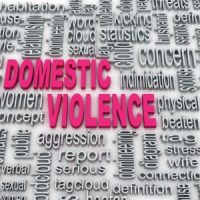Legal Protections Against Domestic Violence in California

Domestic Violence or abuse from a partner can happen to anyone, anywhere. It can be difficult to grapple with the thought of taking action against an abusive person, particularly a partner, for a number of reasons. One of the trickiest to navigate is the insidious tendency to believe that there is nothing you can really do to protect yourself.
This article aims to empower readers by educating them on some of the legal constructs available to support individuals who have suffered domestic violence. Leveraging these tools and educating yourself on resources available to you can be a transformative step. Whether you are a survivor, or a friend, family member, or partner of a survivor, learning about protecting yourself from domestic violence helps us to empower ourselves and strengthen the safety of our communities.
Ways of Protecting Against Domestics Violence
There are two primary forms of legal protection against Domestic Violence in California. Survivors can:
- Obtain an Emergency Protective Order,
- Obtain a Domestic Violence Restraining Order
These two items provide different protections, further discussed below.
- Emergency Protective Order
An Emergency Protective Order (EPO) may be granted if the person is in immediate danger of domestic violence. This determination is based on the complainant’s allegation of a recent instance of abuse, or threat of abuse, against the person the order is issued against.
Being granted an Emergency Protective order will generally begin with contacting the local police to report the domestic violence/threat of violence so that an application for the order can be created and submitted to the judicial office.
Effective Period of an Emergency Protective Order
The Emergency Protective Order (EPO) goes into effect immediately after it is granted and lasts either 7 calendar days or 5 business days: whichever of these timeframes happens to be shorter at the time the order is issued. (7 calendar days may be shorter, for example, if the order is granted just before holidays).
The short timeframe is put in place because this order is really intended to be a placeholder of protection while complainants pursue the more permanent Domestic Violence Restraining order.
- Domestic Violence Restraining Order
The Domestic Violence Restraining Order is an official order of protection issued by the Court that can be ordered to last up to three (3) years. These orders serve to prevent the accused person from abusing the applicant in accordance with the terms of the order. Each order will be tailored to the specific details of the case at hand. With that said, in general the restraining order will prohibit a named party from harassing, following, or contacting the applicant. The order might also require the named party to stay away from the applicant’s place of work, home, vehicle, and other family members or persons if reason for that protection is provided and deemed justifiable by the court.
Temporary Restraining Order
After the Request for a Domestic Violence Restraining Order is filed with the Court, the reviewing Judge may issue a Temporary Restraining Order based on his or her evaluation of the allegations in the Petitioner. If a Temporary Restraining Order (TRO) is issued, temporarily preventing the accused person from performing the acts set forth in the TRO, they must be personally served on the accused person and remain in effect until the hearing on the Request for the Domestic Violence Restraining Order.
Effect of the Protections
Too frequently, survivors of domestic violence do not pursue these legal protections. Some voice a disbelief that a court order or “piece of paper” can protect them against a violent person. But these orders DO provide protection in a large number of ways. And can be enormously beneficial in preventing future harm to survivors or others who have been affected by the abuse.
Consider that the U.S. is a free country, and people are free to do a great number of things. This freedom makes it difficult to stop an individual from doing things that are actually threatening, unless there is an order that establishes the existence of the threat. For example, a person may walk past your office door a number of times during the day. Under the laws of our nation nothing about that scenario, on the surface, would appear to require police or court involvement. However, if the court has on record the reported history of abuse/threatening behavior from a specific person, they may be able to create an order which recognizes the threat and establishes that the person cannot walk past your office door without violating that order. If the order is violated, the court can pursue that violation. Without the order, the court would likely have no recourse to protect in the same way.
Reach Out to Us Today for Help
Every situation of abuse is unique. Every person deserves to receive honest, tailored advice that will best help them navigate through the process of protecting themselves and their loved ones. Contact the San Francisco domestic violence lawyers at Cardwell, Steigerwald Young to begin working with one of our attorneys today.
Sources:
cpedv.org/domestic-violence-organizations-california
courts.ca.gov/1261.htm?rdeLocaleAttr=en
